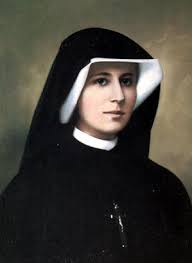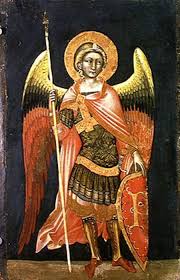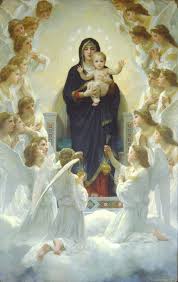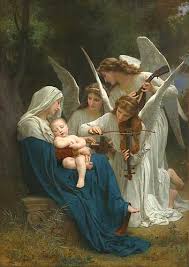 Do you struggle with worry? I know I do on occasion. Life for the Christian is a daily exercise in surrender to Divine Providence and Venerable Solanus Casey knew this all to well. Recently, I have found the following quote from Venerable Casey to be most helpful. It is a wonderful reflection to use during your prayer time this week, especially if you are struggling with worry.
Do you struggle with worry? I know I do on occasion. Life for the Christian is a daily exercise in surrender to Divine Providence and Venerable Solanus Casey knew this all to well. Recently, I have found the following quote from Venerable Casey to be most helpful. It is a wonderful reflection to use during your prayer time this week, especially if you are struggling with worry.
“Worry is a weakness from which very few of us are entirely free. We must be on guard against this most insidious enemy of peace of soul. Instead let us foster confidence in God, and thank Him ahead of time for whatever he chooses to send us.
If we only try to show the Dear Lord a good will and ask Him for resignation to the crosses He sends or permits to come our way, we may be sure that sooner or later they will turn out to have been just so many blessings in disguise.”
Venerable Solanus Casey, pray for us.
Related Resources:










 Lent is upon us. I’m wondering if you have asked yourself how you will make your Lenten preparation for Easter? It’s a good question to ask.
Lent is upon us. I’m wondering if you have asked yourself how you will make your Lenten preparation for Easter? It’s a good question to ask. “My daughter, be diligent in writing down every sentence I tell you concerning My mercy, because this is meant for a great number of souls who will profit from it.”
“My daughter, be diligent in writing down every sentence I tell you concerning My mercy, because this is meant for a great number of souls who will profit from it.”  this short study on the angels features just such a poem. It is written by J. Corson Miller, an American poet who was born in 1883. The time of his death is unknown.
this short study on the angels features just such a poem. It is written by J. Corson Miller, an American poet who was born in 1883. The time of his death is unknown. Today is the Feast Day of St. Therese of Lisieux, one of my favorite saints since childhood.
Today is the Feast Day of St. Therese of Lisieux, one of my favorite saints since childhood. of God as we celebrate two feast days in their honor. We will be looking at their function and mission. I encourage you to read my earlier two posts on the angels if you haven’t done so already.
of God as we celebrate two feast days in their honor. We will be looking at their function and mission. I encourage you to read my earlier two posts on the angels if you haven’t done so already.  Happy Feast of the Archangels! Yesterday’s post began a short study on the angels. We discussed who the angels are and who the angels are not. Today we are going to take a look at the characteristics of the angels.
Happy Feast of the Archangels! Yesterday’s post began a short study on the angels. We discussed who the angels are and who the angels are not. Today we are going to take a look at the characteristics of the angels. Tomorrow is the Feast of the Archangels (September 29) and Friday is the Feast of the Guardian Angels (October 2). Because of the importance of the angels in God’s plan of salvation, their specific intercession for us and the rampant confusion in our day and time regarding them, my blog will offer a short study on the angels for the next couple of days. Each post will close with a suggestion or practical strategy for you to employ. May these posts be a source of clarity and inspiration for you.
Tomorrow is the Feast of the Archangels (September 29) and Friday is the Feast of the Guardian Angels (October 2). Because of the importance of the angels in God’s plan of salvation, their specific intercession for us and the rampant confusion in our day and time regarding them, my blog will offer a short study on the angels for the next couple of days. Each post will close with a suggestion or practical strategy for you to employ. May these posts be a source of clarity and inspiration for you.  Steadfast Cross
Steadfast Cross